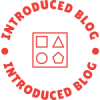In the realm of publishing, the choice of printing method is pivotal to the quality, cost, and overall success of a book. With advancements in technology and a diverse array of printing techniques available, understanding what type of printing is used for books can significantly impact both the production process and the reader's experience. This article delves into the various printing methods employed in the book industry, exploring their unique characteristics, advantages, and ideal applications.
- Traditional Printing Techniques
1.1 Offset Printing
Offset printing is the most widely used method for producing books, particularly for large print runs. This technique involves transferring ink from a plate to a rubber blanket, which then applies the ink to the paper. The advantages of offset printing include:
- High Quality: Offset printing produces sharp, clean images and text, making it ideal for books with intricate graphics or photographs.
- Cost-Effectiveness: While the initial setup costs can be high, the per-unit cost decreases significantly with larger print runs, making it economical for mass production.
- Versatility: This method can accommodate various paper types and sizes, allowing for creative flexibility in book design.
However, offset printing is less suitable for short runs due to its setup costs and longer turnaround times.
1.2 Letterpress Printing
Letterpress printing, a traditional method that has seen a resurgence in recent years, involves pressing inked metal or wood type against paper. While it is less common for mass-market books, it is often used for specialty items such as limited editions, art books, and invitations. Key features include:
- Tactile Quality: The impression left on the paper creates a unique texture that many readers find appealing.
- Artistic Appeal: Letterpress allows for creative designs and typography, making it a favorite among independent publishers and artisans.
Despite its charm, letterpress printing is labor-intensive and not cost-effective for large volumes.
- Digital Printing Techniques
2.1 Digital Inkjet Printing
Digital inkjet printing has revolutionized the book publishing industry, particularly for short runs and print-on-demand (POD) services. This method uses inkjet technology to print directly onto paper, offering several benefits:
- Quick Turnaround: Digital printing allows for rapid production, making it ideal for time-sensitive projects.
- Customization: Each copy can be personalized, which is advantageous for niche markets or self-publishing authors.
- Reduced Waste: Print-on-demand eliminates the need for large print runs, reducing excess inventory and waste.
However, digital inkjet printing may not match the quality of offset printing for high-volume projects, particularly in terms of color fidelity and paper options.
2.2 Digital Laser Printing
Similar to inkjet printing, digital laser printing uses laser technology to produce images on paper. This method is often used for smaller print runs and proofs. Its advantages include:
- High-Speed Production: Laser printers can produce pages quickly, making them suitable for urgent projects.
- Consistent Quality: Laser printing offers reliable quality across multiple copies, which is essential for maintaining brand consistency.
While laser printing is efficient, it may not be the best choice for high-quality art books or publications requiring intricate color work.
- Specialty Printing Techniques
3.1 Screen Printing
Screen printing is primarily used for creating covers or special editions of books rather than the interior pages. This technique involves pushing ink through a mesh screen to create designs. Its benefits include:
- Vibrant Colors: Screen printing allows for bold, vivid colors that can enhance the visual appeal of book covers.
- Durability: The ink used in screen printing is often more durable than traditional inks, making it suitable for books that may be handled frequently.
However, screen printing is not practical for large volumes of text-heavy books due to its labor-intensive nature.
3.2 Flexography
Flexography is a form of relief printing that uses flexible plates to transfer ink onto various substrates. While primarily used for packaging, it can also be applied to book printing, especially for unique formats or materials. Its advantages include:
- Speed and Efficiency: Flexography is capable of high-speed printing, making it suitable for large runs.
- Adaptability: This method can print on a variety of materials, including plastic and cardboard, expanding the possibilities for book design.
Conclusion
Choosing the right printing method for books is a critical decision that can influence the final product's quality, cost, and marketability. From traditional offset printing to modern digital techniques, each method offers distinct advantages and is suited to different publishing needs. Understanding these options allows authors, publishers, and designers to make informed choices that align with their creative vision and business objectives. As the publishing landscape continues to evolve, staying abreast of these printing technologies will be essential for anyone involved in the book industry.

